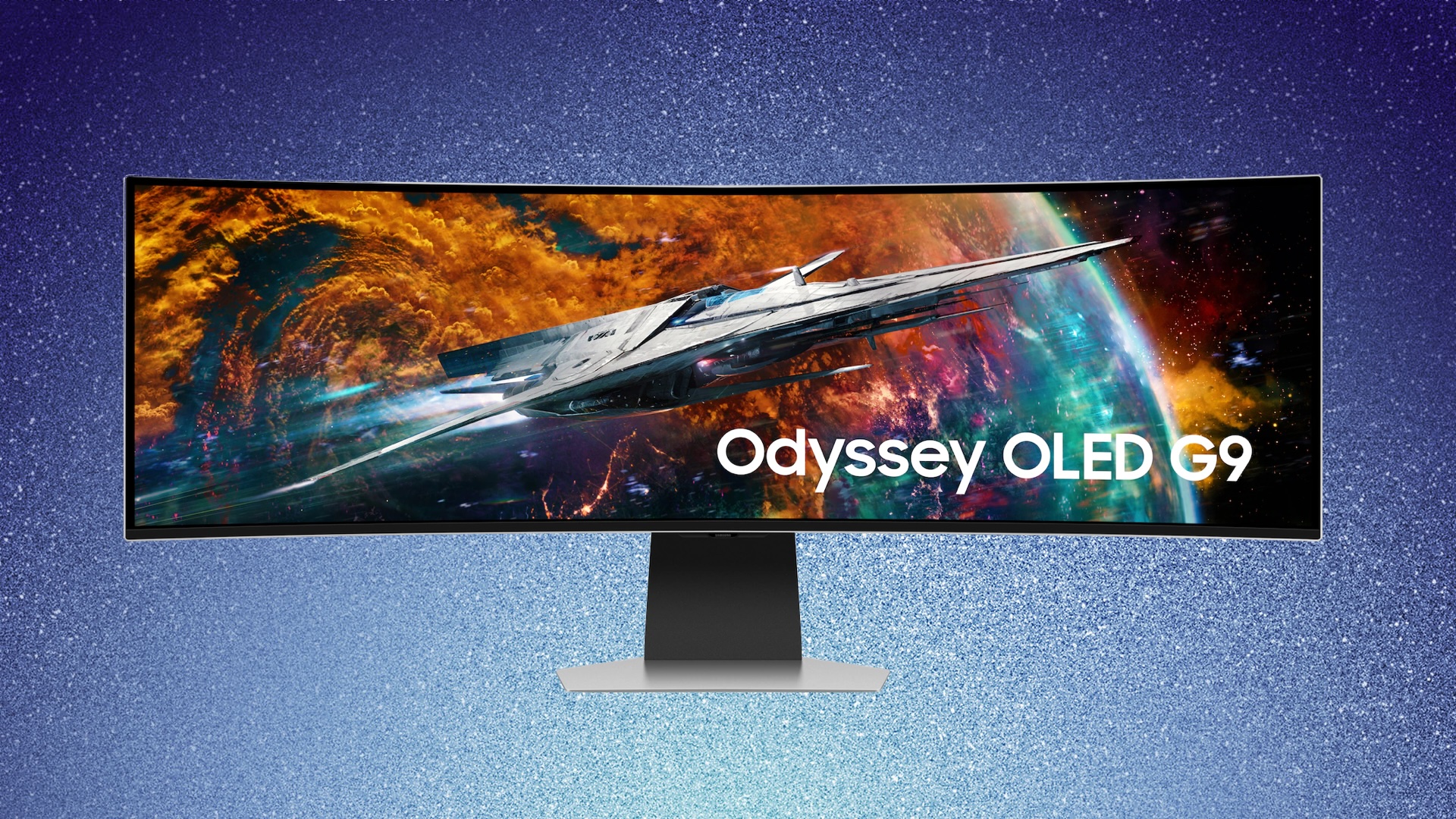|
From Samsung to Sony, from LG to Lenovo and from cutting-edge TVs to futuristic robots, CES 2026 will set the tech agenda for the year ahead.
|
|
Your phone is with you all the time, but chances are you're not cleaning it as often as you should.
|
|
 Apple has asked the UK Court of Appeal to overturn a £1.5 billion ($1.76 billion) antitrust ruling that found the company overcharged millions of App Store users, escalating one of the most significant competition cases ever brought against the company in the country (via The Guardian). Apple has asked the UK Court of Appeal to overturn a £1.5 billion ($1.76 billion) antitrust ruling that found the company overcharged millions of App Store users, escalating one of the most significant competition cases ever brought against the company in the country (via The Guardian).
|
|
It's long past time for home tech users to upgrade to a reliable password manager, especially if they're getting new devices.
|
|
CES is the January trade show where the tech industry kicks off the year with a bevy of new and notable announcements — and it's less than a week away. The CES 2026 show floor is officially open from January 6 through 9, but the fun kicks off with events on Sunday January 4 and a host of press conferences on Monday. As always, product demos, announcements and networking will be happening at the Las Vegas Convention Center and other hotels all over the city. As usual, Engadget will be covering the event in-person and remotely, bringing you news and hands-ons straight from the show floor.
More specific details and pre-announcements are already trickling out as CES approaches, and thanks to the CTA's schedule we also do know what companies will be hosting press conferences. We're also using our experience and expertise to predict what tech trends could rear their heads at the show.
The CES 2026 schedulePress conferences and show floor booths are the bread and butter of CES. The Consumer Technology Association has already published a searchable directory of who will have a presence at the show, along with a schedule of every official panel and presentation.
On Sunday, January 4, Samsung will kick-off CES with "The First Look," a presentation hosted by TM Roh, the CEO of Samsung's DX Division, on the company's "vision for the DX (Device eXperience) Division in 2026, along with new AI-driven customer experiences." Ahead of that, though, Samsung has already outlined a variety of more specific
|
|
 LG
For years, LG has kicked off CES press day with the first event of the morning — and 2026 will be no different. The Korea-based corporation is theming its presentation as "Innovation in Tune with You," and — if it follows the template of past presentations — it will highlight both the consumer electronics and large appliance sides of its mammoth global businesses. LG
For years, LG has kicked off CES press day with the first event of the morning — and 2026 will be no different. The Korea-based corporation is theming its presentation as "Innovation in Tune with You," and — if it follows the template of past presentations — it will highlight both the consumer electronics and large appliance sides of its mammoth global businesses.
Like nearly all tech-centric events these days, expect AI to be the binding theme of the LG presentation at
|
|
If cleaning up your digital life is on your New Year's resolution list, we've got good news: 1Password is offering half off its subscription plans now through December 30. This includes the Individual and Families plans.
That brings the price of the Individual plan down to $24 for a year and the Families plan down to $36 for a year. The plans are nearly identical, but the Families plan accommodates five additional people. These discounts are only available to new customers and the prices expire after the year, so set a reminder to cancel or reassess.
This provider topped our list of the best password managers, and for good reason. We appreciated the intuitive interface and the fact that it's available on most platforms, so you'll never be left out in the cold. These include Chrome, Firefox, Safari, Edge, macOS, iOS, Windows, Andro
|
|
State filing is super affordable and federal returns are free using the FreeTaxUSA service. It lacks educational support and professional help costs extra making it only suitable for simple tax situations.
|
|
 Samsung kicked off a new end-of-the-year sale this week, introducing great deals on monitors, TVs, Galaxy smartphones, and home appliances. Many of these deals are the exact same all-time low prices we tracked during Black Friday and Cyber Monday. Samsung kicked off a new end-of-the-year sale this week, introducing great deals on monitors, TVs, Galaxy smartphones, and home appliances. Many of these deals are the exact same all-time low prices we tracked during Black Friday and Cyber Monday.
|
|
 Apple's costly Detroit-based Developer Academy program relies heavily on taxpayer funding while delivering mixed job outcomes, according to WIRED. Apple's costly Detroit-based Developer Academy program relies heavily on taxpayer funding while delivering mixed job outcomes, according to WIRED.
|
|
Ubisoft had to shut down Rainbow Six Siege's servers and roll back transactions, a situation that came from a widespread breach that left various players with billions of in-game credits, ultra-rare skins of weapons, and banned accounts. As of Sunday, December 28, the status page on Rainbow Six Siege's website still shows "unplanned outage" on all servers across PC, PlayStation and Xbox.
Later that evening, though, the company confirmed that it was done testing on the update it pushed out and was opening the severs back up to players. It also said that the transaction rollback was complete, but that the Marketplace would remain closed for the time being.
?? The rollback is also complete.
?? Players who did not log in between December 27th 10:49 UTC and December 29th… https://t.co/mfaAVnvK5G
— Rainbow Six Siege X (@Rainbow6Game) December 29, 2025
The fiasco began Saturday morning when Ubisoft said on X that they were "
|
|
Apple isn't ready to pay a several billion-dollar fine to UK App Store users and is filing an appeal over a major antitrust lawsuit. As first reported by The Guardian, Apple has requested to appeal to the UK's Court of Appeal, which would escalate the case beyond the Competition Appeal Tribunal (CAT).
The latest appeal attempt follows an October decision from the CAT, where the court found that Apple engaged in anticompetitive practices by exploiting its dominant market position with the App Store to charge higher fees. The CAT's ruling established a £1.5 billion, or roughly $2 billion, fine, but Apple said it planned to appeal and that the court "takes a flawed view of the thriving and competitive app economy." The CAT didn't grant Apple the appeal, leading the iPhone maker to seek a higher court to overturn the ruling.
Apple hasn't made any official statements about its latest appeal application, but it's likely that it will argue against the CAT's proposed App Store developer fee rate of between 15 and 20 percent, which it reached through "informed guesswork," instead of the existing 30 percent. If the fine does ultimately stick, the $2 billion fine would be split amongst any App Store user in the UK who made purcha
|
|
An electrician shares how to avoid a holiday fire this season.
|
|
Whether you want to battle Star Wars spaceships or shoot a cinematic masterpiece, one of these drones is going to be perfect for you.
|
RELATED ARTICLES | | |
|
Ubisoft has shut down Rainbow Six Siege's servers and is in the process of rolling back the fallout of a widespread breach that left various players with billions of in-game credits, ultra-rare skins of weapons, and banned accounts. As of Sunday afternoon, the status page on Rainbow Six Siege's website still shows "unplanned outage" on all servers across PC, PlayStation and Xbox.
— Rainbow Six Siege X (@Rainbow6Game) December 27, 2025
The fiasco began Saturday morning when Ubisoft said on X that they were "aware of an incident currently affecting Rainbow Six Siege" and "working on a resolution." A couple of hours later, the Rainbow Six Siege servers were shut down, following plenty of user reports showing either zero or billions in R6 credits, rare skins in their lockers and either account bans or unbans. Ubisoft later clarified Saturday afternoon
|
|
Under the shift, which Google said would eventually be rolled out to all users, old addresses would remain active. Messages and services would not be lost.
|
|
The future is "amazing," it's not necessarily sustainable.
|
|
Starting at around 1PM ET on December 24, Steam experienced an outage that impacted users ability to access the game store and play games online. Valve didn't acknowledge the outage publicly, but SteamDB's unofficial Steam Status page reported that the Steam Store, Steam Community, and Steam Web APIs were all offline.
DownDetector received over 6,000 outage reports around 1:15PM ET, and Steam is also inaccessible from Valve's mobile apps. The outage appears to be affecting APIs for Valve's online games, like Team Fortress 2, Dota 2 and Counterstrike 2, as well.
By around 4PM ET, Steam itself had begun to rebound, and as of 6PM ET, the platform had largely recovered, with the main PC, mobile and Mac clients broadly fully functional, but ocassionally erroring out. There are still parts of the service that are extremely sluggish and, according to SteamDB, many of Valve's online games are down or only partially functional.
Steam's last major outage was in October, when the store and online services were unavailable for an hour. Earlier in September, the launch of Hollow Knight: Silksong temporarily took down Steam, the Xbox Store and Nintendo's eShop due to how many people tried to download the game at the same time.
Update, December 24, 6PM ET: This story has been updated to note which Valve offerings are currently functional and when they recovered.
This article originally appeared on Enga
|
|
 Due to regulatory action, Apple has agreed to allow alternative app stores, third-party payment systems for in-app purchases, and in-app links to external offers on iOS in Brazil, according to legal news website MLex and Brazilian blog Tecnoblog. Due to regulatory action, Apple has agreed to allow alternative app stores, third-party payment systems for in-app purchases, and in-app links to external offers on iOS in Brazil, according to legal news website MLex and Brazilian blog Tecnoblog.
|
|
If you have a resolution in the new year to get more acquainted with your finances, a good budgeting app can help with that. One of our favorites is a bit cheaper to sign up for right now: Monarch Money is offering 50 percent off annual subscriptions for new users. Use the code MONARCHVIP at checkout to get half off, so you'll pay just $50 for one year of access.
Monarch Money was the runner-up in our guide to the best budgeting apps in 2025, and it was definitely a grower. Initially we found the experience of using the app to be needlessly complicated compared to some of its rivals, but get over that hurdle and it's impressively fully-featured. There are plenty of customization options, a helpful "goals" feature and a thorough month-in-review recap that beats out similar features from some of its competitors. We also like how you can grant account access to others.
Besides the steep learning curve, we also noted that the mobile app is less intuitive to use than the web version, which migh
|
|
Broadcom actually announced four different designs — the BCM6718 for the residential access point market, the BCM43109 for mobile handsets, plus the BCM43840 and BCM43820 for enterprise APs — that it will sell as chips as well as license as intellectual property. The sampling process has already begun, Broadcom said.
Wi-Fi 7 is already well established in both PCs and handsets across the world. That Wi-Fi 7 technology, launched in 2023, is still being worked on: Intel's Panther Lake laptop processor, for example, includes Wi-Fi 7 Release 2 support, which works toward better communication between your PC and the access point to reduce latency and increase the overall performance.
That's the whole point behind Wi-Fi 8, which broke cover in late 2024 and is set to be formally adopted probably by late 2028. That's never stopped wireless chip vendors, however, which tend to put as much as they know of the specification into silicon as soon as they can to start landing design wins with customers just as soon as possible.
It's probably not a coincidence that the latest Wi-Fi 7 standards are transitioning into the overarching guidelines behind Wi-Fi 8: To improve the quality and reliability of Wi-Fi 8 wireless connections, rather than just improve performance. Wi-Fi 8 still
|
|

Copy.aiPhoto:- Copy.ai
First one on the list is copy.ai. It is an AI based copy writer tool. Basically what a copywriter tool does is, it gives you content that you can post on your blog or video when you give it a few descriptions about the topic you want content on.So copy ai can help you write instagram captions gives you blog idea, product descriptions, facebook content, startup ideas, viral ideas, a lot of things it can do, you just make an account in this website, then select a tool and fill in the necessa
|
|


